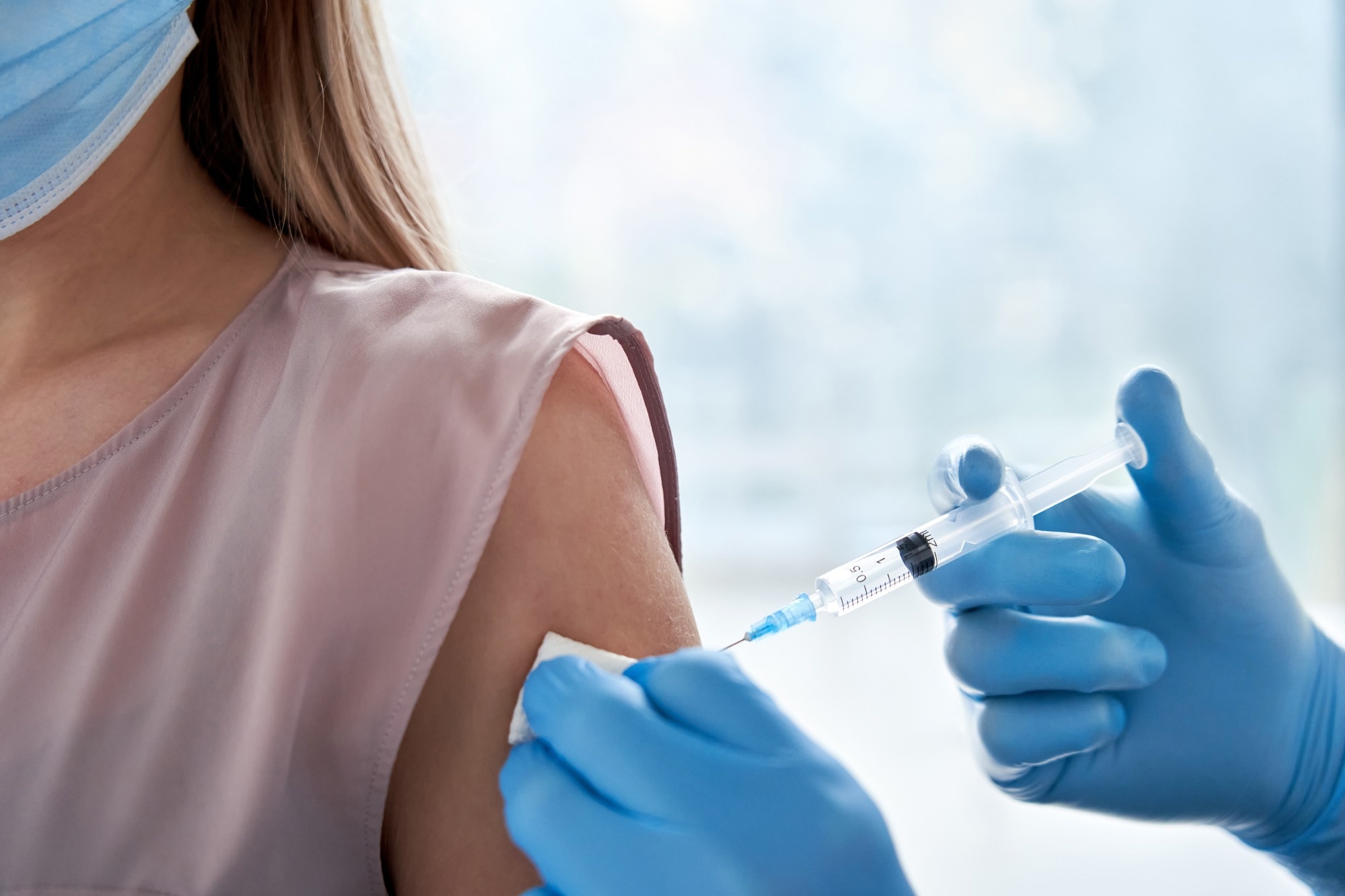In a recent study published in the Annals of Internal Medicine, researchers assessed the BNT162b2 vaccine’s effectiveness in preventing severe acute respiratory syndrome coronavirus 2 (SARS-CoV-2) infections and severe disease among pediatric and adolescent individuals in the United States (US).
 Study: Real-World Effectiveness of BNT162b2 Against Infection and Severe Diseases in Children and Adolescents. Image Credit: Ground Picture/Shutterstock.com
Study: Real-World Effectiveness of BNT162b2 Against Infection and Severe Diseases in Children and Adolescents. Image Credit: Ground Picture/Shutterstock.com
Background
Randomized controlled trials evaluated BNT162b2 efficacy among children before SARS-CoV-2 Omicron variant emergence.
The United States Food and Drug Administration (US FDA) expanded emergency use approval to individuals aged between 12 and 15 years and five to 11 years in October 2021. By April 2023, 40% of five-to-11-year-olds and 72% of 12-to-18-year-olds in the US received ≥1.0 vaccine doses.
Further research is required since prior observational studies had limited follow-up periods and data on vaccine-induced protection over the long run against coronavirus disease 2010 (COVID-19) due to the Omicron variant.
About the study
The researchers of the present study evaluated BNT162b2 vaccine effectiveness against SARS-CoV-2 among pediatric and adolescent individuals during the SARS-CoV-2 Delta- and Omicron-variant predominant periods in the US.
The researchers used electronic medical record data obtained from PEDSnet, a nationwide association of pediatric healthcare systems, including the Cincinnati Medical Center, Hospital of Philadelphia, Robert Lurie & Ann Hospital in Chicago, Colorado Hospital, Nemours Health System, Nationwide Hospital, Stanford Health, and Seattle Hospital.
The study participants included 77,392 adolescent individuals (including 45,007 vaccinees) during Delta predominance, 111,539 pediatric individuals (including 50,398 vaccinees), and 56,080 adolescent individuals (including 21,180 vaccinees) during Omicron predominance. The intervention was the initial BNT162b2 vaccine dose vs. no dose of the SARS-CoV-2 vaccine.
The study outcomes included documented SARS-CoV-2 infection and severity, intensive care unit (ICU) admission, and cardiovascular complications. The team performed Poisson regression modeling to determine the relative risk values, balancing for confounders by propensity score matching.
The team conducted clinical epidemiological regression (CER) research to investigate BNT162b2’s effectiveness in preventing pediatric and adolescent SARS-CoV-2 infections.
The study cohorts were as follows: the first study cohort (Delta analysis among adolescents): individuals aged between 12 and 20 years in the Delta-dominant period between July 1 and November 30, 2021; the second study cohort (Omicron analysis among children): individuals aged between five and 11 years in the Omicron-dominant period between January 1 and November 30, 2022; and the third study cohort (Omicron analysis among adolescents): individuals aged between 12 and 20 years in the Omicron-dominant period between January 1 and November 30, 2022.
The team defined SARS-CoV-2 infections by positive polymerase chain reaction (PCR), serology, antigen testing, COVID-19 diagnosis, or occurrence of post-acute COVID-19 sequelae or multisystem inflammatory syndrome (MIS) in children, irrespective of symptom presence.
They considered ICU visits a week before and 13 days after documented COVID-19 as COVID-19-related.
The clinical outcomes of cardiac complications included the incidence of pericarditis, myocarditis, or MIS to allow for a comprehensive capture of potential cardiovascular complications after infection and evaluation of BNT162b2 vaccine effectiveness concerning cardiovascular risks.
Results
During Delta predominance, BNT162b2 effectiveness was 98% against documented COVID-19 among adolescents without significant waning following the initial dose.
Analyzing cardiovascular complications showed no significant differences between vaccinees and non-vaccinees. The vaccine was highly effective against severe infections.
The relative risk of the vaccine for cardiovascular complications was 1.2. During Omicron predominance, BNT162b2 effectiveness against SARS-CoV-2 infection in children was 74%. The team observed higher vaccine effectiveness against moderate-severe SARS-CoV-2 infection (76%) and COVID-19-related ICU admissions (85%). The relative risk of the vaccine for cardiovascular complications was 0.3.
Among adolescents, BNT162b2’s effectiveness against Omicron infections was 86%, with 85% against moderate-severe Omicron infection and 92% against COVID-19-related ICU admission. BNT162b2 effectiveness against Omicron was reduced after four months of the initial dose (from 82% to 71% among children and 91% to 83% among adolescents) and subsequently stabilized.
The team observed a lowered risk for cardiovascular complications among vaccinees during Omicron predominance, with a relative risk of 0.1 for the vaccine on cardiovascular complications.
In the sensitivity analyses, the effectiveness against SARS-CoV-2 BA.1, BA.2, BA.4, and BA.5 subvariants aligned with the primary findings, whereas BNT162b2 effectiveness was lower against BQ.1, XBB, and subsequent subvariants of the virus.
The comparison results indicated that the vaccine effectiveness was consistent across different sensitivity ranges, indicating the robustness of the primary findings.
Conclusion
Overall, the study findings showed high effectiveness against Delta and moderate effectiveness of the BNT162b2 vaccine against Omicron, with waning effectiveness over time.
Vaccinated children and adolescents had a lower risk of cardiac complications during Omicron predominance, and there was no significant difference between vaccinated and unvaccinated individuals during Delta predominance.
The study findings underscored the role of BNT162b2 in reducing SARS-CoV-2 transmission, minimizing sick leaves, and alleviating economic burdens during the COVID-19 pandemic.
Further research is required to explore the effectiveness of COVID-19 vaccines on emerging SARS-CoV-2 subvariants and their potential waning effects.